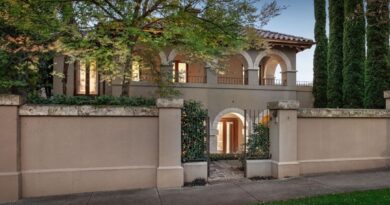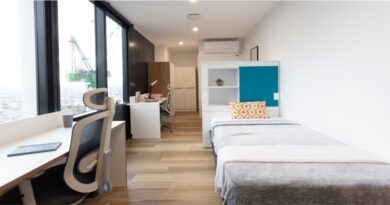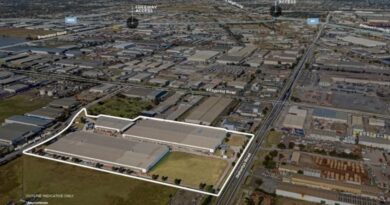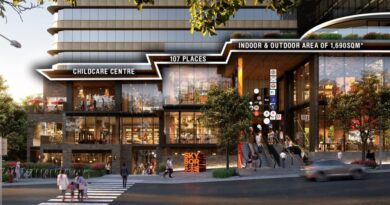What is The Coburg Initiative (Coburg 2020 Initiative)
Coburg is regarded as a centre offering many opportunities for consolidation of the activity centre role, based on existing physical and community infrastructure assets that include:
• Sydney Road Coburg Shopping Centre including major supermarket chains
• public transport facilities and services
• Moreland City Council Municipal Offices
• Coburg Primary and St Paul’s Catholic Primary Schools
• Coburg Senior High School
• Coburg Library
• Coburg City Oval
• Moreland Community Health Service
• Coburg Leisure Centre
• Coburg Olympic Pool
• regional community services
• numerous community organisations, services, clubs
• maternal and child health services, child care and preschool facilities
• excellent access to regional open space, including Coburg Lake and the Merri Creek parklands
• offices, showrooms, restaurants and retail premises
• churches, representing a number of denominations
• the former Pentridge Prison, currently undergoing redevelopment by private operators
• existing population, living in predominantly detached low and medium density housing around the centre.
Central Coburg 2020 Vision
The Central Coburg 2020 Structure Plan builds on the vision articulated in the document titled Central Coburg 2020 Background Report and Vision. This document was developed in conjunction with the community and stakeholders of Coburg and adopted by Council in June 2003.
The vision for Central Coburg in 2020 is:
Central Coburg develops as the prime shopping, living, employment and activity precinctin Moreland. The centre is transformed into an attractive system of streets and spaces.
Central Coburg becomes a sought-after living environment, offering a range of housing choices, including high density housing. Most people arrive at the centre on foot, by bike or by public transport. The provision of a range of services enables people to conduct a number of different activities based on the one trip.
Central Coburg is linked with networks of green space.
This vision has been developed around five key themes with Council responses for each. These themes and responses are as follows.
The heart of Moreland Vision: Central Coburg develops as the prime shopping, living and activity precinct in Moreland.
Desired outcomes:
• increase the number of people using the centre
• increase the worker and visitor population
• offer a range of services in one accessible location, including community facilities and cultural activities, as well as a wide range of shops
• increase the hours of activity so that the centre is active and safer from early morning through to late evening
• encourage development that helps to make Central Coburg environmentally sustainable
• increase the density and quality of buildings in selected areas
• increase mixed-use development that accommodates commercial, retail and residential uses
• contribute to a sustainable economy, through increased local jobs and local worker population
• highlight the local advantages of cultural influences on retail activity
• maintain and celebrate Coburg’s diverse multicultural community
• facilitate access to a range of local services that address different support needs
• better integrate the area so that it is not divided into four parts by main roads.
Council’s response is to encourage concentration of better quality services and facilities in the Coburg Activity Centre, and to make the centre more sustainable, attractive and easier to use.
Quality spaces for people Vision: the centre is transformed into an attractive system of streets and spaces.
Desired outcomes:
• improve the existing character and sense of place
• create a stronger and more legible centre
• improve the safety of the environment
• create a safe, attractive and convenient network of pedestrian spaces throughout the centre
• improve the quality of and access to public space.
Council’s response is to create a high quality, better connected, pedestrian friendly environment throughout Central Coburg.
A place to live Vision: Central Coburg becomes a sought-after living environment, offering a range of housing choices.
Desired outcomes:
• increase the local resident population
• increase mixed-use development that accommodates residential uses
• increase the diversity and flexibility of housing types to meet different housing needs
• enable people to remain in the community as they age and their housing needs change
• increase the provision of affordable housing
• maintain the quality of residential areas.
Council’s response is to encourage provision of additional dwellings and new housing types and living environments within the centre and to maintain and enhance the quality of existing residential neighbourhoods.
Linking the community Vision: most people arrive at the centre on foot, by bike or by public transport. The provision of a range of services enables people to conduct a number of different activities based on the one trip.
Desired outcomes:
• make the centre more accessible and inter-connected by nonmotorised (non-car) travel
• link rail, bus and taxi services
• integrate the railway station with the Central Coburg area
• improve the efficiency of the Sydney Road tram service
• facilitate greater use of public transport through improved service and train station, bus- and tram-stop amenity
• improve the safety and ease of movement on foot, for people of all ages and abilities, to shops, schools and community facilities
• improve the safety and ease of bicycling
• enhance the environmental
sustainability of the centre by prioritising pedestrian, cycling and public transport facilities
• better integrate the area so that it is not divided into four parts by main roads
• ensure Pentridge is redeveloped to form an integral part of Coburg
• reduce vehicle congestion to enable improved vehicle access for those reliant on the private car and for delivery vehicles
• enhance streets as high quality accessible public spaces.
Council’s response is to create an integrated transport hub at Coburg railway station, coupled with a finegrained network of pedestrian- and
cyclist-friendly streets and links.
Networks of green Vision: Central Coburg is linked with networks of green space.
Desired outcomes:
• make central Coburg a greener, leafier place
• improve the quality and diversity of open space
• improve access to open space
• tree-planting will contribute to Moreland’s greenhouse gas reduction efforts.
Council’s response is to consolidate and upgrade existing open spaces, and provide better and greener links to them from the centre of Coburg.
The concept of sustainable development underpins the vision for Central Coburg and as such will have significant influence on all aspects of the structure plan.
Sustainable development is development that meets the needs of the present without compromising the ability of future generations to meet their own needs.
In support of this underlying principle, the structure plan will deliver an integrated approach to the social, economic and environmental issues facing the area, and provide a strategic framework for future land use and development to ensure its long-term sustainability.
From vision to structure plan
The Central Coburg 2020 Structure Plan aims to deliver on the Central Coburg 2020 Vision by creating the framework for a sustainable, medium to higher density, mixed-use, community-focused village. The structure plan will provide housing for 6,000 residents and provide around 1,400 new equivalent full time employment opportunities by 2020. With 3,000 new residences, an additional 25,000 square metres of retail floor space and 40,000 square metres of commercial and office floor space, Central Coburg will become a desirable place to live and will make a significant contribution to the economic success of Melbourne’s north.
The framework for the redevelopment of the area is aimed at providing a new living, working and leisure environment for the City of Moreland. New medium- to highdensity housing in the core of the centre will provide new housing choices for those who may be attracted to the benefits of living in close proximity to public transport facilities, retail, community, cultural, entertainment, and commercial facilities.
Importantly, a key emphasis of the structure plan is on creating an environment that is physically suitable and socially welcoming to all people. Standards will apply to ensure minimal barriers to all, including housing, streets, public buildings, public spaces, and transport services, benefiting all people in the community through a variety of life stages.
The creation of a mixed-use environment, where people can work, live and play, will require a move to a more sustainable transport system. This will include changing people’s travel behaviour by encouraging increased public transport use and reduced levels of car dependency. The centre will become pedestrian-focused with wide pedestrian links through the centre and into adjacent areas, tree-lined streets, and active street level activities. New tree-lined boulevards will improve the entrances to the centre.
Opportunities
The Central Coburg 2020 Structure Plan provides the opportunity to set out a framework for the renewal of the centre, capitalising on its current assets. The structure plan will assist in achieving a range of Council policies in relation to sustainable urban villages, including access to jobs and social infrastructure. The articulation of a preferred future for Coburg will ensure that ad hoc planning that does not represent the aspirations of the Coburg community does not occur. The following points outline the opportunities the structure plan provides for the achievement of the Central Coburg vision and highlights key aspects of the plan. Leadership
The Central Coburg 2020 Structure Plan provides Council with the opportunity to take a leadership role by:
• guiding the future planning of the area
• setting new standards for design
• setting new benchmarks for sustainable design
• providing certainty to all stakeholders
• implementing demonstration and catalyst projects
• being a proactive partner in therenewal of the centre
• facilitating development.
Commitment to environmentally sustainable development
Council is strongly committed to the achievement of environmentally sustainable development (ESD) and will set higher standards for new development in Central Coburg.
Design excellence and the achievement of best practice in ESD will be key drivers. This will ensure that new development improves the amenity of the centre, ensures the health of the community and reduces impacts on the environment through minimising energy, water, waste, air impacts. Whole-of-centre approaches to managing energy and stormwater drainage in particular, are being seriously examined. Central Coburg will be used to showcase the opportunities that ESD can bring to the community through improved living, working and playing environments. The plan will capitalise on opportunities for living in close proximity to an abundance of public transport services and play a significant role in minimising the impacts of the car. Protecting and enhancing the built, natural and cultural environments is also a key goal of the plan.
Maximising opportunities from population growth Coburg has been constantly changing since its settlement in the 1840s and 1850s. At its peak in the post-war period, the core of the activity centre contained some 100 houses which would have accommodated approximately 400 people. This population has now been displaced by the supermarkets and car parks. The decline in population numbers has also been felt through falling household sizes as the population has changed and aged. A smaller population and changes to household structure have impacted on the success of the retail and community facilities and other infrastructure.
Renewing population numbers within Central Coburg provides opportunities to capitalise on many of the assets that characterised Coburg’s past: a ‘walkable’ and safe neighbourhood with good community surveillance, improved patronage on public transport leading to improvements to service and frequency, and a renewal of the retail offer within the centre which once included the major retail chains.
Sense of place The range of changes which have occurred in Central Coburg during the second half of the twentieth century have resulted in an erosion of the centre’s identity and attractiveness as a social and economic hub. The valued established character of Coburg derives from the remnant boom era shops on Sydney Road, and the significant civic and institutional complexes and buildings. The structure plan will guide redevelopment of Coburg to ensure that a new ‘sense of place’ is generated which builds on and enhances this character – a heart for Moreland with a distinct identity, of which the Moreland community is proud and to which people and activity are attracted.
Maximising opportunities from transit-oriented development The structure plan maximises opportunities available from transitoriented development. Transitoriented development is the creation of urban precincts around key transport nodes to improve the interaction between land use and transport. Coburg developed before the advent of widespread car ownership, and its original layout was an example of this form of development, before increases in car use and the need for car parking impacted on these qualities.
This form of development provides the opportunity to maximise public transport use and minimise reliance on the car. Coburg is well-served by public transport services; significant train, tram and bus infrastructure moves through the centre, servicing north–south and east–west movement. East–west movement will be improved through the ‘Smart Bus’ over the coming years providing frequent, high quality services. A new public transport interchange is a key project of the structure plan and will contribute significantly to the achievement of transit-oriented development.
Pentridge
The former Pentridge Prison provides opportunity for a key heritage attractor in Melbourne’s north.
Established at around the same time as Tasmania’s Port Arthur, the site exhibits many of the same approaches to incarceration and punishment.
Much of the site has been redeveloped into residential housing, injecting a new ‘free’ resident population into the area – providing opportunities for retailers and raising the need for community and social infrastructure.
Housing – affordability and equity of access
The provision of new housing in Central Coburg will contribute to meeting Melbourne’s future housing needs while contributing to the renewal of Moreland’s hard and soft infrastructure. The centre is welllocated close to public transport with a range of established community services and retail premises that would benefit from increased patronage levels. New forms of housing in Moreland create the opportunity to provide a range of housing types and different forms of housing tenure (e.g. leasehold) to suit all life stages and enable people to age in their community.
The structure plan provides Council with the opportunity to ensure improved provision of affordable housing. Council will work with social housing providers to facilitate the inclusion of affordable housing as a feature of every residential development within the centre, particularly those occurring on Council-owned land. A range of housing tenure options, which maximise access for people of all incomes will be encouraged.
Community
The capacity of the many communities of Coburg will be strengthened through improved community facilities and spaces for community activities. Central Coburg contains a concentration of community facilities serving the local and regional population. The structure plan will build on those community facilities, creating adaptable multi-purpose facilities or ‘hubs’. The role of the Coburg Town Hall as a civic space will be strengthened.
High quality public spaces will be designed for both structured and unstructured community activities to occur. These spaces will enable the community to come together at different times of the day or night for a range of events and informal gatherings.
Challenges
The enormous potential for development in Coburg has been demonstrated by a small number of projects in the recent past, for example 136 Bell Street and planning permits issued for a number of major developments. That this potential has not been realised more fully is due to a combination of factors, including land configuration and ownership.
The Central Coburg 2020 Structure Plan will encourage the reconfiguration of land into parcels which will generate a sustainable urban form, and accommodate mixed-use development which will suit market expectations.
Council will seek to catalyse development through demonstration project(s), utilising its own significant land holdings, and through negotiation and cooperation with other land holders.
Moving from a car-based centre
The extensive provision of open lot car parking in Central Coburg has been an important factor in servicing the supermarkets as the primary shopping destination. However, this has also resulted in a high proportion of trips to the centre being made by car. The challenge then is to incrementally change travel behaviour so that the existing car parking can be reconfigured, demand reduced and the proportion of trips made by alternatives to the car increased.
Land ownership
The configuration of land ownership in central Coburg ranges from the narrow lots in individual ownership of the Sydney Road strip, to the large parcels held by Council and a small number of private owners. The large lots present the best opportunities for significant redevelopment of the centre, allowing for the creation of sustainable urban form with east–west streets. The redevelopment of smaller sites fronting Sydney Road will depend on consolidation of sites, which will only be viable where the built form controls can be met.
Structure of retailing
The existing structure of retailing in Central Coburg reflects the historical development of the centre. The Sydney Road strip represents a traditional late nineteenth – early twentieth century strip centre, while the configuration of supermarkets and associated car parking reflects the influence of increased car ownership. The location of the supermarkets between the railway and Sydney Road creates an imbalance between the levels of activity in the areas to the east and west of Sydney Road. The Central Coburg 2020 Structure Plan will improve the balance by encouraging the location of a major retail anchor on the east side of Sydney Road.
Additionally, the structure plan/business plan will encourage the establishment of businesses which will fill the key gaps in the provision, such as a discount department store or a book store.
Level of change
The extent of redevelopment or change which is encouraged in the Coburg Activity Centre will be articulated to ensure that the objectives of the vision and Melbourne 2030 are achieved. The extent of change will not be the same throughout the activity centre.
The structure plan identifies three levels of change taking account of the following factors:
• land use
• preferred future direction of development
• growth and change opportunities
• accessibility
• areas to be protected from undesirable change.
The three levels of change are as follows.
• Significant change – this is where development will be focused to transform uses, activity and urban character. This area is highly accessible by all modes of transport.
An intense mixture of uses will be created in high quality, high density development. Car parking will be restructured to support the transformation of the centre.
• Medium change – areas where a level of change will occur which will contribute to the vitality of the activity centre, however this change will be managed to maintain the established urban character. These areas have good accessibility by multiple transport modes. A mixture of uses will be created in high quality, medium–high density development. The existing character and amenity of adjacent residential areas will be maintained. The historical fabric of the former Pentridge Prison, which meets the criteria of this level of change, will be incorporated into a new urban character.
• Incremental change – areas where some change is likely, but where change must be managed to ensure that it does not dilute the focus on redevelopment in major change areas, and where interface and urban character issues are significant. These areas have good accessibility by multiple transport modes. A mixture of retail, office and residential uses will be developed. Redevelopment opportunities are constrained by the block sizes, the need to manage interfaces to adjacent residential areas and on Sydney Road, where redevelopment will reinforce the established scale and rhythm of the street (particularly in the heritage precincts).
Map 7.1 in Volume 2 (of Coburg Initiative website) identifies the three levels of change expected within the activity centre.
Current strengths and assets of Central Coburg Central Coburg already has many attributes that can be built upon to ensure the successful implementation of the structure plan. These opportunities are available because Coburg:
• has extensive, open-lot car parks available for new development
• has land owned by Council which enables Council to be a key contributor to the success of the plan
• is well-located, being only 8 kilometres from the Melbourne Central Activities District with close access to City Link and the Western Ring Road
• has excellent public transport infrastructure
• offers opportunity to update and renew aging infrastructure and the public environment
• has a number of existing vacant redevelopment sites
• already has significant physical and community infrastructure and services.
Central Coburg Strategic Framework
The Central Coburg Strategic Framework plan (see Map 1.2) outlines the key strategic directions for future land use planning and development in Central Coburg. Key actions and opportunities are identified and provide the building blocks for the success of the plan.







